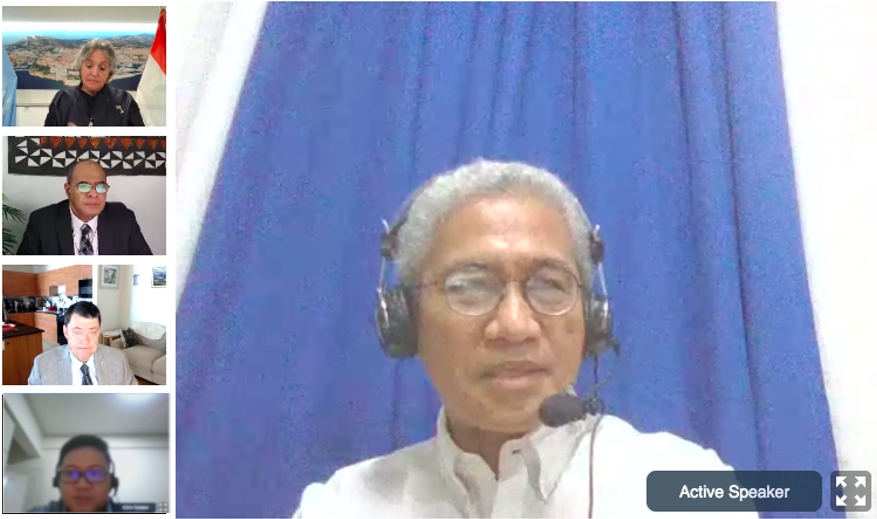Philippines Raises Alarm on Impacts of Sea-Level Rise

Dr. Fernando Siringan at the 21st Meeting of the UN Open-ended Informal Consultative Process on Oceans and the Law of the Sea.
PASAY CITY 23 June 2021 – The Philippines highlighted the urgent need to address sea-level rise at the 21stMeeting of the United Nations Open-ended Informal Consultative Process on Oceans and the Law of the Sea, held virtually from 14 to 18 June 2021.
As an archipelagic state with numerous low-lying coastal areas and communities, the Philippines is one of the countries most vulnerable to sea-level rise and its effects.
Department of Foreign Affairs-Maritime and Ocean Affairs Office (DFA-MOAO) Director John Francis Herrera noted the Philippines has already begun to experience the effects of sea level rise. He warned that “our future survival is at risk if sea level rise is allowed to go on unabated”.
Speaking as an expert panelist on the impacts and compounding factors of sea-level rise in the Philippines, Dr. Fernando Siringan of the University of the Philippines-Marine Science Institute said that sea level rise in the Philippines is three to four times faster than the global average rate. Although impacts of sea-level rise such as coastal flooding, coastal erosion and the salinization of aquifers are already felt, there are numerous compounding local factors. These include compaction due to excessive groundwater withdrawal and subsidence due to aquaculture ponds. He also stressed that “sea-level rise is one of the consequences of global warming that is a present danger for the Philippines.”
The United Nations Open-ended Informal Consultative Process on Oceans and the Law of the Sea is held annually and reviews developments in ocean affairs and the law of the sea. The Philippines was among those that pushed for the consideration of sea-level rise as the topic for this year’s meeting.
The Philippine delegation was composed of representatives from the Department of Foreign Affairs, Department of Environment and Natural Resources - Environmental Management Bureau, and the National Mapping and Resource Information Authority. END

